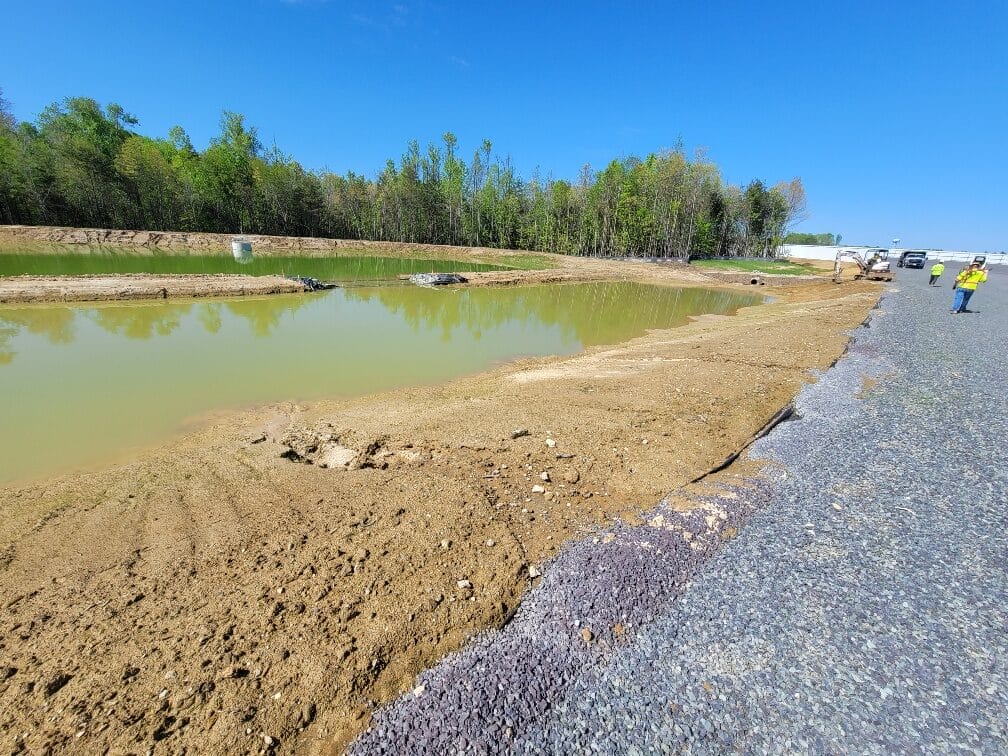Stormwater Management: Maintaining Your System’s Performance
Thousands of stormwater management and green infrastructure systems are in place all over the country, with commercial property owners owning and being responsible for many of them. Almost all commercially developed properties come with some type of stormwater management system, designed to be very low maintenance.
However, neglecting the maintenance of your stormwater management or green infrastructure system can result in major problems. Owners are legally bound to maintain stormwater facilities correctly and skipping maintenance can also result in further deterioration and a much costlier repair bill later on.
It is a much better idea to be aware of the needs of your stormwater management system and maintain them in order to ensure optimum performance at all times.
Types of Stormwater Systems
A stormwater management system is a requirement when properties are first developed for private or commercial use so as to prevent any adverse effect on the environment and nearby properties. The system is usually designed to deal with water quality by treating the onsite runoff and to make sure the water will leave the property at the same quality as it was before the development took place.
There are a variety of different stormwater facilities that can be designed for a specific property, depending on a number of factors including topography and location. In the majority of instances however the system will be one of two types – a wet pond or a dry pond. Seasonal high water depth largely determines this, with a pond that is near to the surface being of greater benefit to be designed as a wet pond system, and vice versa.
Wet Ponds
Wet pond systems sound like what they are, a property area that has been designed for the purpose of maintaining water within a pond-like environment. Wet ponds treat development runoffs with the use of vegetation and sunlight, which helps to break down, filter and cleanse any pollutants. Wet ponds require less maintenance and inspections than is the case with dry ponds because the growth of vegetation is allowed and even encouraged.
Dry Ponds
Dry pond systems are again what their name makes them appear to be. Rather than being designed for the purpose of maintaining water, dry ponds are instead designed for the treatment of pollutants within the runoff while filtering through the soil and the substrate.
Unlike wet ponds, dry ponds need to be kept clear of excess vegetation to allow the soil to perform its filtering. Dry ponds tend to require more frequent inspections as well as more stringent maintenance.
Both wet and dry pond systems will feature a series of pipes, drains and inlets all over the property that carry stormwater straight to the pond system to be processed.
Routine Maintenance for Stormwater Systems
Some routine maintenance will stay the same regardless of the nature of the pond type, such as preventing erosion and making sure that drains remain clear. Ponds may also need some maintenance to fences, while dry ponds will also require vigilance to ensure there is no vegetative overgrowth.
Preventing Erosion With Stormwater Drains
Erosion can become a serious issue when it causes pond embankments and other parts of the stormwater system to deteriorate. Erosion that is identified early enough can be quickly fixed with simple solutions such as plantings and gravel.
However if erosion is allowed to significantly deteriorate, it can eventually lead to flooding, expensive repairs, system failures and even liability should legal or financial remedies for damages be sought by neighboring properties.
To ensure any problems are detected early, the property should be regularly inspected either by the owner, the grounds maintenance team or by engaging the services of a system professional.
Maintaining Stormwater Drain Systems
In Virginia, Maryland, and Washington, DC, stormwater drains may become clogged with debris such as leaves, twigs, and branches, especially during autumn and early spring. This debris can result in flooding onto the property or neighboring properties, both of which can become a big problem. It is easy to ensure that drains are kept clear by employing the same methods used to prevent erosion, particularly frequent inspections.
Maintaining Stormwater Facility Fences
Certain ponds can become a property feature that tenants and visitors alike can enjoy, while others may need fence enclosure. This will depend on the steepness of the embankments, with steep slopes increasing drowning risks and therefore needing a fence.
If a pond already has a fence then it is important to ensure that fence is correctly maintained. Damaged or absent fences could cause major liability issues in the event someone gains access to the pond and is injured as a result.
Stormwater management and maintenance is simple providing all the correct steps are taken from the beginning. To find out more information, or to request a proposal for a stormwater system for the Virginia, Maryland, & DC Metro Area, contact Muller, Inc. or call us on 703-560-4040.

